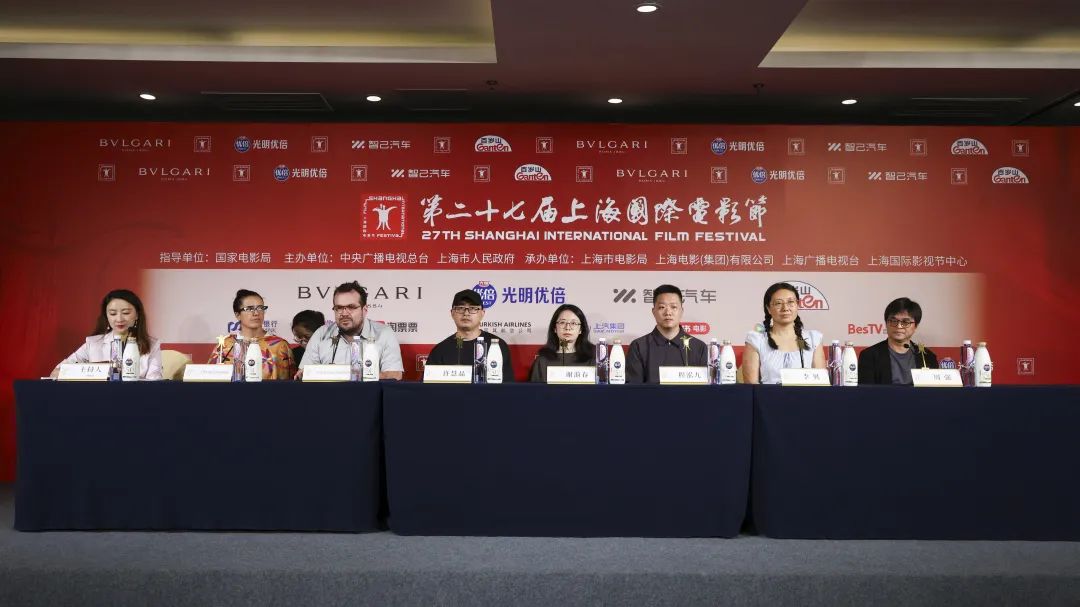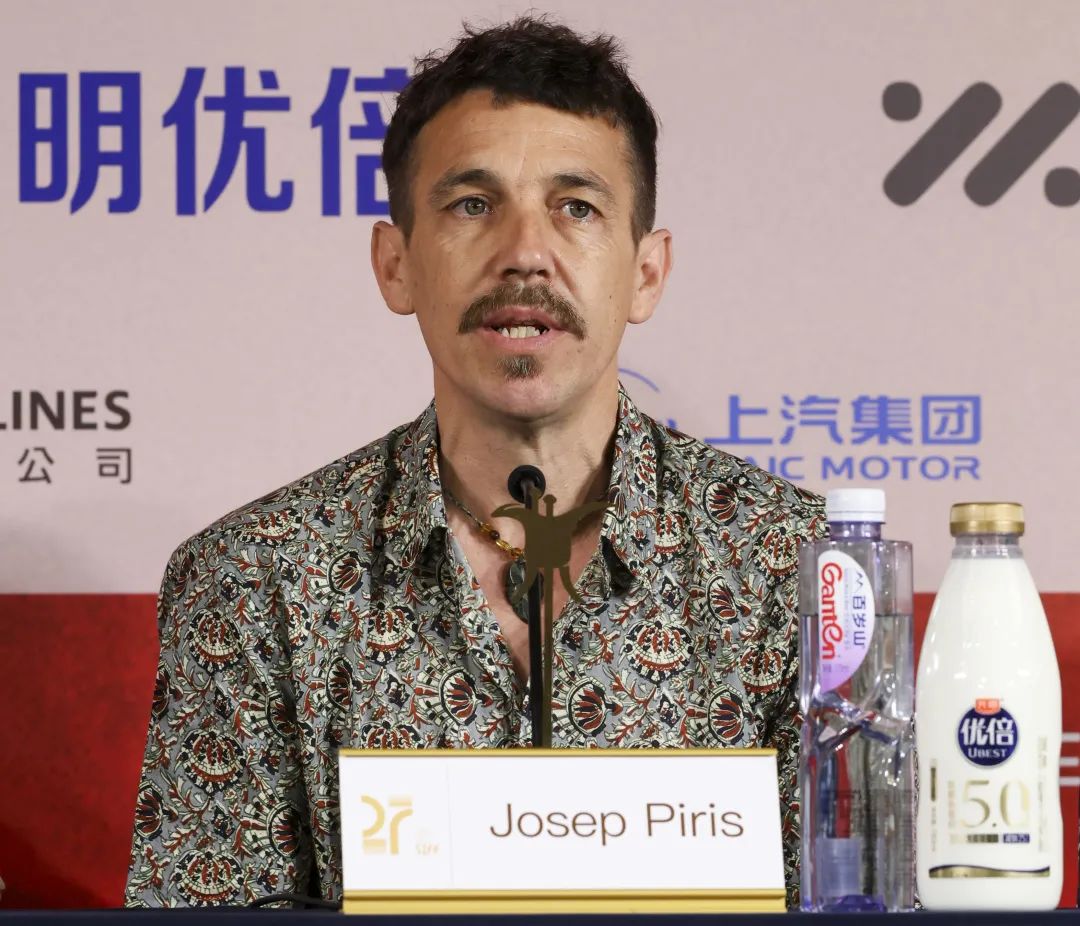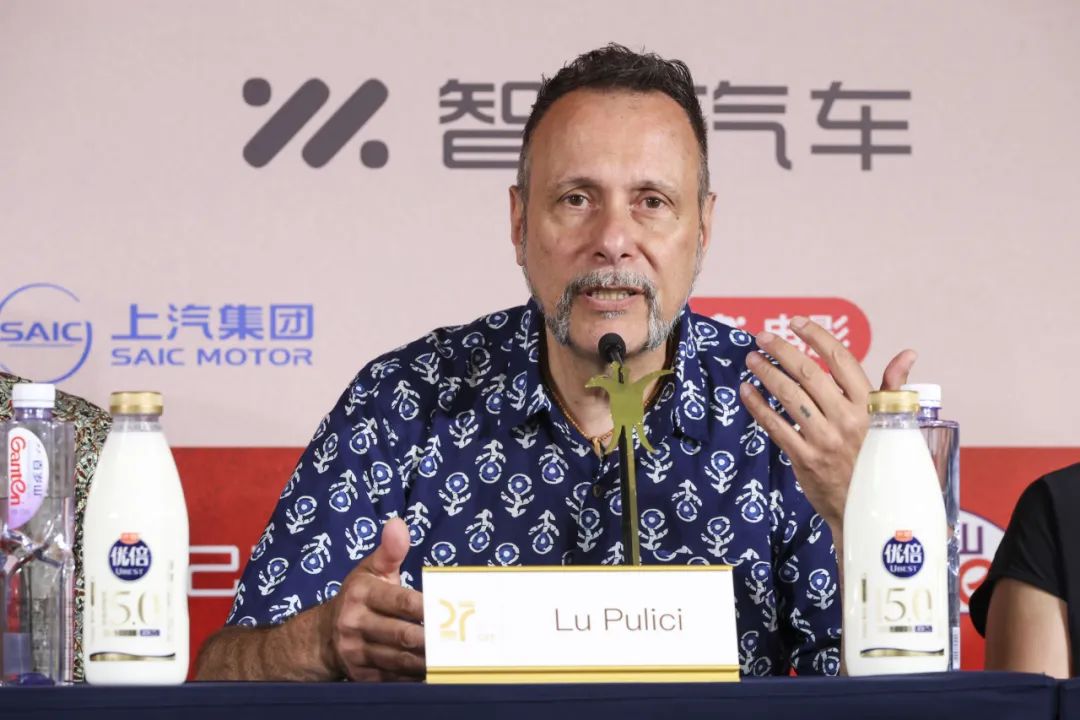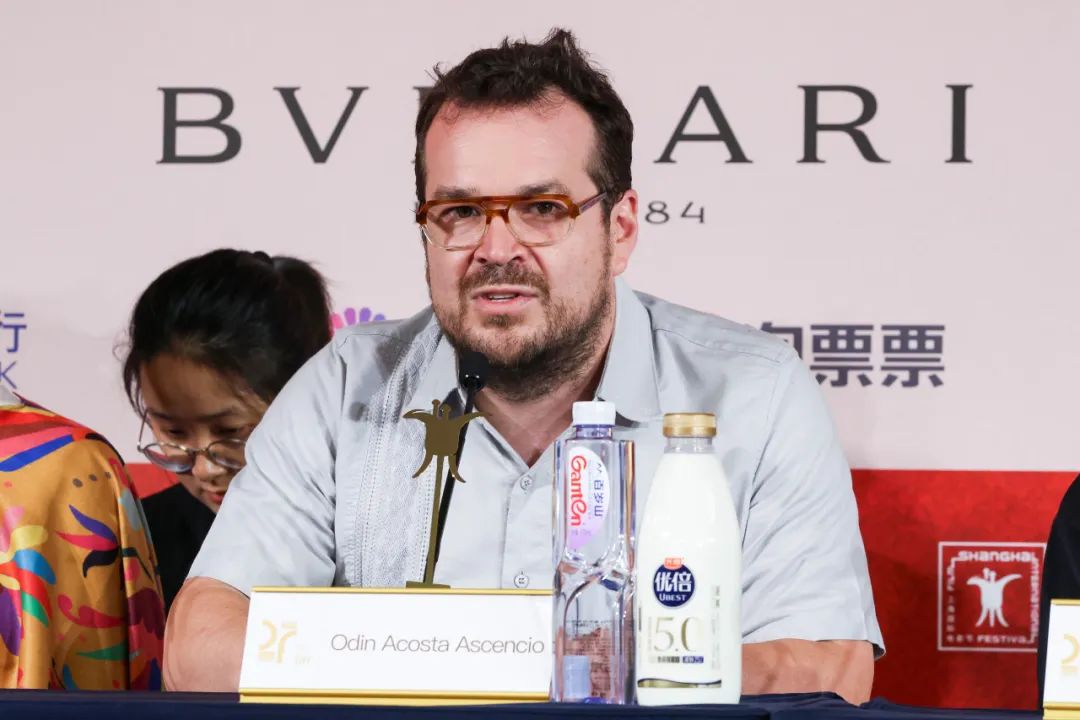Golden Goblet Awards Documentary Section | Document the Inheritance of Civilization and the Dialogue with Nature, and Witness the Power of Truth
As a visual expression of real life, documentaries are the oldest form of film. With their unique charm, they have captivated countless audiences, and the number of documentary viewers in China continues to grow. Shanghai International Film Festival (SIFF) established the Golden Goblet Awards Documentary Section in 2015. The entries vying for the Best Documentary award showcase the brilliance of humanity through different dimensions and perspectives, using cinematic language to reflect on and reveal the strength found in confronting real-world challenges.
On the afternoon of June 19, the creators of the shortlisted documentaries in the Golden Goblet Awards Documentary Section - Constanza, The Guardian of Stories, Brigade 2045, and Catchers on the Moon - appeared at a meet-and-greet to discuss their thematic expressions and filmmaking techniques.


Focus on Artistic Lives and Preserve Ancient Crafts
Among the shortlisted documentaries, Constanza and The Guardian of Stories center on the themes of humanistic art and cultural heritage. Constanza features renowned Spanish sculptor José Manuel Martínez and unveils the complete process of creating a sculpture, interweaving insights into the artist’s unique life journey. Interestingly, one scene was shot in a Madrid café owned by a Chinese man. The owner seriously asked the director, Agustín Márquez Gómez, “Can this film be shown in China?” Agustín thought it was a joke - but it came true. “From a small café in Madrid to the Shanghai International Film Festival - it’s both unexpected and thrilling,” he said.
While presenting the artist’s life and creative process, Constanza inevitably confronts the tension between personal privacy and truthful documentation. Fortunately, Agustín Márquez Gómez has been steadily gaining experience in navigating this delicate balance between “privacy and authenticity”. “I believe the key to reconciling this conflict is sincerity,” he explained. “I ask her directly how she wants to be portrayed on camera, and how we should adjust the content of the shoot.” In Márquez Gómez’s view, he is not only the director of the documentary but also its steward - someone who must continually manage the film to ensure it maintains the highest quality and integrity.

The protagonist o The Guardian of Stories is a grocery shop owner who also holds a unique identity - that of a traditional storyteller. The film interweaves his journey of exploration with captivating ancient legends, immersing audiences in the mystical world of folklore. “We chose the theme of ‘storytelling’ not only because it represents an artistic form of cultural transmission,” explained director Claudia Bellasi, “but also because this ancient craft is gradually disappearing.” “We hope to build a bridge for artistic creation through the language of cinema. The film is both a tribute to ancient culture and a way to preserve intangible cultural heritage.”

To authentically and vividly depict the storyteller’s world, the film incorporates a large number of traditional puppet performances. While every country has a different historical and cultural background, co-director Markus Steiner Ender emphasized that “puppetry is a vessel of culture. It reflects both human existence and mortality, as well as our yearning for nature. Visual language is universal, and I believe Shanghai audiences will find resonance rather than distance.” In the film, the storyteller, Siphai Thammavong, comes from a modest background and struggles financially, yet he remains devoted to preserving Laos’ ancient storytelling traditions. This deeply moved producer Josep Piris, who said, “His life is far from easy, yet he still pursues his ideals with unwavering commitment. We must support him in continuing this path.”


While supporting Siphai, producer Lu Pulici also hopes to help preserve Laos’ intangible cultural heritage and awaken a deeper sense of cultural identity in everyone. “Every country has its own unique history. This heritage doesn’t just belong to Laos - it belongs to people all around the world.” The film’s editing is particularly well-crafted, weaving the storyteller’s journey with ancient Laotian legends. Editor Cornelia Schoepf played a crucial role in achieving this. “When combining live-action footage with scenes of puppetry, the editing pace needs to remain gentle. What matters most is the truthful portrayal of the storyteller’s journey,” she explained.


Zoom in on Humans and Nature, and Convey Humanistic Care
Documentaries have long carried the mission of documenting social realities and expressing humanistic concerns. Brigade 2045 and Catchers on the Moon both focus on the relationship between humans and nature, reflecting the filmmakers’ profound contemplation on our environment and ecological balance. Brigade 2045 vividly recreates the intense and perilous scenes of firefighters battling blazes with fire, powerfully depicting human courage and unity in the face of social disorder. Directing a documentary on the theme of “protecting nature” has always been a dream for Olivia Luengas Magana. “Documentaries allow us to highlight the identities of specific groups. Firefighters risk their lives to protect our shared natural ‘mother’, and we hope this film inspires the public to reflect on what truly matters in life,” she said.

In Brigade 2045, wildfires rage through forests, and firefighters rush into danger to combat the flames - but filming such scenes was fraught with challenges. “We mainly filmed scenes surrounded by fire, which were extremely high-risk. Dense smoke and unpredictable fire conditions often disrupted the shoot,” recalled producer Odín Acosta. “Our hope is that this documentary serves as a tribute to the firefighters who protect both human lives and the natural world. These people deserve to be seen and recognized by society.”

Catchers on the Moon takes a documentary narrative approach to reveal the hardships and challenges of ecological restoration. Director Xu Huijing, who has nearly 20 years of experience in documentary filmmaking, has received accolades and screenings at both domestic and international festivals. His focus on ecological change began in 2019, when he developed a strong desire to explore land-related topics, ultimately choosing to approach the subject through the lens of a family. “What is the connection between the family unit and our current ecological environment? How do we respond to widespread desertification?” Xu sought to explore questions like “What’s happening to the soil?” and “What’s happening to us as people?” - ultimately asking: “What can we, as individuals, actually do in the face of this? Can we achieve our goals through personal effort?”

However, the filmmaking process was far from smooth. The team spent over half a year filming one family, only to have to halt the project due to unforeseen circumstances. Luckily, new protagonists, Ma Yanwei and Li Bei, came into the picture. “They were incredibly open to participating in the film - it was an unexpected blessing,” said producer Xie Yichun gratefully. “When someone is willing to share such a pivotal part of their life, that’s what really makes a documentary come alive.” Shooting in the desert presented severe challenges: extreme heat, sandstorms, and heavy wear and tear on equipment. But for producer Cheng Hongjiu, the hardest part wasn’t the physical environment - it was balancing “reality and idealism”. “We had to first fulfill the director’s artistic vision, then solve the practical issues that came with it. It was a fascinating process.”


Li Bei, one of the film’s main subjects, had never appeared in a documentary before and had no prior acting experience. Filming began just as she was entering a particularly difficult stage of her life. “I was experiencing extreme anxiety,” she recalled. “But the director truly understood my situation and emotions. I’m incredibly grateful for this experience - it made me witness the true power of documentary film.” The film seamlessly blends natural landscapes with human-centered storytelling. Editor Zhou Qiang reflected: “The moon waxes and wanes, just like Li Bei’s journey - the symbolism aligns perfectly. We wove the beauty of the natural world into her emotional story. The vast desert, the open sea - these awe-inspiring scenes paired with the brightness of the moon represent hope.”









